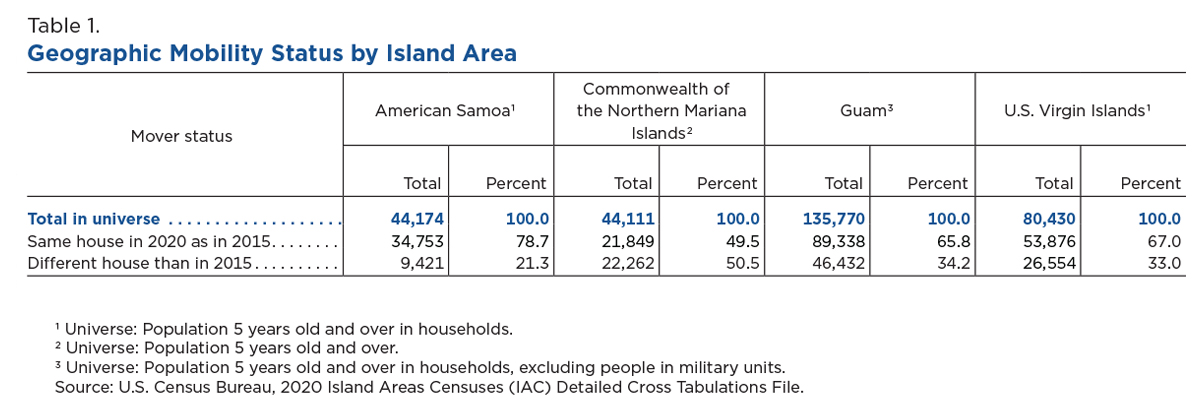 |
USGS Seawater regularly tos the manmade perimeter berm on the island of Roi-Namur in the Republic of the Marshall Islands, |
 |
| Severe tropical storms, or typhoons, sweep across the Pacific Ocean causing great destruction. |
Because of their unique climate and location, the islands of the Pacific are at increased risk for severe weather, including tropical storms, typhoons and hurricanes – and that’s a major reason residents moved from 2015 to 2020, During this five-year period, from a quarter to nearly a half of their residents moved to a new residence, according to recently released 2020 Census of the Island Areas tables.
The nations and territories in the Pacific region are experiencing an approximate increase of 4 millimeters of sea level rise annually in certain regions, which is higher than the worldwide average of 3.4 mm per year, the World Meteorological Organization reports in its 2022 State of the Climate study.
Between 2015 and 2020, the Federal Emergency Management Agency (FEMA) declared major disasters in all four U.S. Island Areas — American Samoa, the Commonwealth of the Northern Mariana Islands (CNMI), Guam, and the U.S. Virgin Islands (USVI).
In the three Pacific Island Areas (American Samoa, CNMI, Guam), over 27.0% of movers reported natural disaster(s) as their primary reason for moving. In the USVI, over 41.0% reported moving because of natural disasters.
Between 2015 and 2020, American Samoa had one declared disaster, Tropical Storm Gita. The CNMI experienced three declared disasters — Typhoons Soudelor, Mangkhut, and Yutu. In addition to Typhoon Mangkhut, Guam experienced two additional declared disasters: Typhoons Dolphin and Wutip. And the USVI had two declared disasters, Hurricanes Irma and Maria.
 |
| Tropical cyclone Lola battered the island nation of Vanuatu in 2023. |
Globally, "2023 is currently the third warmest year to date at 0.43ºC above the recent average, with the average global temperature in July at 1.5°C above pre industrial levels.” said Samantha Burgess, Deputy Director of theEuropean Union’s Copernicus Climate Change Service,
The WMO report said that many regions in the Pacific region, including the Solomon Sea, Banda and Timor Seas, and regions east of the Philippines and the southern shoreline of Indonesia, have experienced significant warming, with the rates two to three times higher than the global average.
Radio Free Asia reports the glacier size in the western part of the Indonesian island of New Guinea decreased by 15% from 0.27 to 0.23 square kilometers between July 2021 and April 2022, while ice thickness dropped 24 meters from June 2010 to early 2021, with only 6 meters remaining in December 2022.
In 2022, the South-West Pacific experienced 35 recorded natural disasters that killed more than 700 people, with floods accounting for over 70% of these incidents, according to the report.
These events impacted over 8 million individuals, inflicting an economic toll nearing $9 billion. In the Philippines and Fiji, increasingly violent and more frequently occurring storms were the predominant reason for the high death toll and the many affected individuals.
- Roughly a quarter to just over a half of residents (age 5 and over) in the four U.S. Island Areas moved from 2015 to 2020:American Samoa had the lowest (21.3%) mover rate.
- The Commonwealth of Northern Mariana had the highest (50.5%).
- In Guam, more than a third (34.2%) of people in households (excluding those in military housing units) moved.
- One third (33.0%) of residents in households reported moving in the US Virgin Islands.


No comments:
Post a Comment